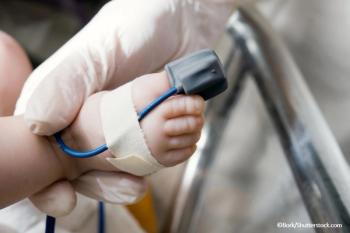
What to Include in the Workup of an Elevated Hemoglobin Concentration and Hematocrit?
Q:My patient has an elevated hemoglobin concentration and hematocrit; however, the reticulocyte count, ferritin level, results of hemoglobin electrophoresis, and total iron-binding capacity are normal. What is the next step after common causes of an elevated hemoglobin concentration and hematocrit, such as chronic obstructive pulmonary disease, have been ruled out?
What to Include in the Workup of an Elevated Hemoglobin Concentration and Hematocrit?Q:My patient has an elevated hemoglobin concentration and hematocrit; however, the reticulocyte count, ferritin level, results of hemoglobin electrophoresis, and total iron-binding capacity are normal. What is the next step after common causes of an elevated hemoglobin concentration and hematocrit, such as chronic obstructive pulmonary disease, have been ruled out?
A:First, make sure that the hemoglobin level and hematocrit are truly elevated. Reasons for pseudoelevated values. In some textbooks and many laboratories in the United States and the United Kingdom,"normal ranges" are misstated. This is chiefly because most of the participants in "normal value" studies are iron-deficient blood donors or persons with anemia of other causes. There is overwhelming evidence that values up to 18 g/dL (for hemoglobin concentration) or 53% (for hematocrit) should not be considered elevated in white or Asian men who live at altitudes of 1000 m (approximately 3000 ft) above sea level or less.1 Corresponding cutoff values for white and Asian women are 16.5 g/dL and 48%. African Americans, for unknown reasons, have slightly lower normal limits-by about 0.7 g/dL for hemoglobin concentrations and by about 2% for hematocrit. The upper limit of the normal range in children is lower still. Both hemoglobin levels and hematocrit increase in a linear fashion with altitudes of more than 1000 m above sea level; thus, in mile-high Denver or in Santa Fe, NM, 19 g/dL is a normal hemoglobin concentration in a white man. These upper limits are appropriate for healthy, ambulatory, upright, or seated persons. Recumbency of 30 minutes' duration or more lowers both hemoglobin concentration and hematocrit by about 5%. Chronic illness also lowers these values, as does blood donation. It is not surprising that measurement of hemoglobin concentration and hematocrit in recumbent, hospitalized patients or in blood donors yields spuriously low "normal ranges." Thus, if the hemoglobin concentration in a healthy, ambulatory, white man is 18 g/dL, no further evaluation is required. However, it is prudent to determine that this is a stable value rather than an increase from a prior value of 16 or 17 g/dL. If an earlier value is not available, measure the hemoglobin concentration again in 4 to 6 months. hemoglobin concentration again in 4 to 6 months. If the blood sample was drawn in the morning, recheck both hemoglobin concentration and hematocrit in a sample obtained in the afternoon, following unrestricted food and fluid intake. Within-day and day-to-day normal variations in hemoglobin concentration and hematocrit are larger than is generally recognized. It is common to see in the same patient a morning hemoglobin concentration that appears slightly elevated and an afternoon concentration that is normal. Having no fluids for 8 hours overnight reduces plasma volume slightly; the lower hemoglobin value in the afternoon is the result of better hydration. Mild dehydration that results from restriction of food and fluid intake for 8 to 12 hours before patients provide blood samples for laboratory tests can also cause spurious elevations of hemoglobin concentration and hematocrit. If values are high in this setting, recheck them following hydration. Common causes of true elevations. If the hemoglobin concentration and hematocrit are truly elevated, consider the common causes first:
- Tobacco use, which raises carbon monoxide levels in the blood and leads to a true, although usually mild, erythrocytosis, with hemoglobin concentrations as high as 20 g/dL and hematocrits as high as 60% (in men). Measure the carbon monoxide level in patients in whom tobacco use is the likely cause of their elevated values, and counsel them to quit smoking.
- Obesity, which is a fairly common cause of erythrocytosis.
- Diuretic use; mild erythrocytosis can result from the slight reduction in plasma fluid volume produced by these medications.
Chronic pulmonary disease, even when accompanied by hypoxia and cyanosis, is not usually associated with erythrocytosis, except in patients who smoke. This paradox has been recognized for nearly a century, although not explained. It may reflect some form of physiologic compensation, such as changes in erythrocyte diphosphoglycerate2,3 or reduction in physical activity because of compromised pulmonary function. Rare causes. Once the common causes of elevated hemoglobin concentration and hematocrit have been ruled out, consider the rare disorders that can produce this finding:
- High oxygen affinity hemoglobin variants, such as hemoglobin Malm or hemoglobin Kempsey.
- Polycythemia vera.
- Renal or hepatic tumors.
- Cerebellar hemangioma.
- Venous to arterial shunting, usually accompanied by cyanosis; this finding indicates a need for cardiac catheterization.
When you suspect an obscure cause of elevated hemoglobin concentration and hematocrit, measure arterial blood gases. Normal arterial oxygen content and normal oxygen saturation of hemoglobin (typically 97% to 100%) are characteristic of high oxygen affinity hemoglobin variants, polycythemia vera, and erythropoietin-producing tumors. Low arterial oxygen content and oxygen saturation of hemoglobin are associated with severe pulmonary disease or erythrocytosis caused by a venous to arterial shunt. An elevated carbon monoxide concentration points to tobacco use or other environmental source of carbon monoxide. Cerebellar hemangioma can be excluded if the patient has no neurologic abnormalities, especially no ataxia. A brain scan is not needed. Erythropoietin-secreting tumors of the kidney or liver can be identified by very high levels of serum erythropoietin. In patients with polycythemia vera or high oxygen affinity hemoglobin variants, serum erythropoietin concentration is normal or low (except following phlebotomy or the spontaneous hemorrhage that often complicates polycythemia vera). Polycythemia vera is usually not difficult to diagnose. Obtain a complete blood cell (CBC) count that includes leukocyte and platelet counts (a reticulocyte count is not needed). Typical findings in patients with polycythemia vera are:
- Hemoglobin concentration greater than 19 g/dL (higher in those who live at altitudes greater than 1000 m above sea level; lower in women and in African Americans).
- Hematocrit greater than 59% (higher in those who live at altitudes greater than 1000 m above sea level; lower in women and in African Americans).
- Leukocyte count greater than 12 X 109 /L.
- Platelet count greater than 500 X 109 /L.
- Greatly enlarged spleen that is easily palpable below the left costal margin, except in very obese patients. CT or other imaging studies are rarely required to evaluate spleen size; slight splenic enlargement that is evident only in these studies is not a relevant finding.
These features are unique to polycythemia vera. If the above criteria are met, a blood volume (red cell mass) study is not needed. When findings are equivocal, reexamination of the patient in 4 to 6 months usually clarifies the nature of the problem. In patients whose hemoglobin concentration, hematocrit, leukocyte count, and platelet count are borderline, there is no urgency to diagnose polycythemia vera because at this early stage of the disease there is no treatment that is either effective or appropriate. The principle of primum non nocere applies. When high oxygen affinity hemoglobin variants are the suspected cause of erythrocytosis, obtain a careful family history and CBC data from the patients parents, siblings, and children. These disorders exhibit classic Mendelian inheritance. Normal results on arterial blood gas studies (carbon monoxide, oxygen saturation) indicate a need for a study of the oxygen affinity of hemoglobin (P50 study). This test is available in many laboratories. An oxygen affinity curve with a hyperbolic appearance (rather than the normal sigmoidal configuration) and a P50 value less than 20 torr (mm Hg) (instead of the normal 25 to 30 torr) point to a high oxygen affinity hemoglobin variant. Follow up such results with studies to identify an abnormal hemoglobin concentration as the cause of erythrocytosis; these may include electrophoresis, isoelectrofocusing, amino acid sequence analysis, or DNA sequencing. To best determine which of these tests are appropriate for a given patient, consult with the director of a laboratory that specializes in such studies.
References:
REFERENCES:1. Fairbanks VF, Tefferi A. Normal ranges for packed cell volume and hemoglobin concentration in adults: relevance to "apparent polycythemia." Eur J Haematol. 2000;65:285-296.
2. Fairbanks VF. Myeloproliferative disease: polycythemia vera: the packed cell volume and the curious logic of the red cell mass. Hematology. 2000;4:381-395. 3. Tefferi A. Diagnosing polycythemia vera: a paradigm shift. Mayo Clin Proc. 1999;74:159-162.
Newsletter
Enhance your clinical practice with the Patient Care newsletter, offering the latest evidence-based guidelines, diagnostic insights, and treatment strategies for primary care physicians.





















































































































































































































































































